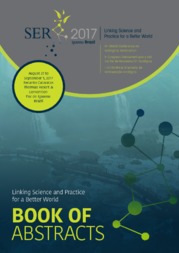Native ecological restoration techniques employed in Brazil.
Native ecological restoration techniques employed in Brazil.
Author(s): TYMUS, J. R. C.; LENTI, F. E. B.; BENINI, R. de M.; SILVA, A. P. M. da; ISERNHAGEN, I.
Summary: Recently, the Brazilian government committed to restore and reforest 12 million hectares of forests until 2030 (Nationally DeterminedContribution - NDC). Seeking to strategically subsidize large-scale restoration policies for Brazil, IPEA and TNC, withthe support of EMBRAPA, the Brazilian Ministry of the Environment - MMA and the Deutsche Gesellschaft fur InternationaleZusammenarbeit - GIZ, developed a study to characterize the main ecological restoration techniques applied in distinct biomesof Brazil. The methodology consisted in identifying widely used materials and management activities. To accomplish that, consultationswere made with project executives, academic experts and public managers from various regions of Brazil. We received 94 responses that contributed to the analyzes performed. The result of this evaluation allowed the description of techniques, foreach Brazilian biome, in terms of the following information: main inputs and activities employed; usual amount of inputs andlabor (man-hours) employed; steps in which each input and activity is used (implementation phase and/or maintenance phase)and a general outline of each technique. Our results show large variability in the characteristics of intensive techniques, wellestablished in the technical and scientific literature (e.g., dense tree planting of several species through seedling), as well as intechniques based on natural regeneration. The expressive number of projects reporting use of the latter (both with and withoutmanagement) highlights the search for efficient results in ecological terms at lower cost and with easier implementation, focusingon natural processes and mechanisms of ecosystems recovery.
Publication year: 2017
Types of publication: Abstract in annals or event proceedings
Keywords: Brasil, Brazil, Ecological restoration, Restauração ecologica
Observation
Some of Embrapa's publications are published as ePub files. To read them, use or download one of the following free software options to your computer or mobile device. Android: Google Play Books; IOS: iBooks; Windows and Linux: Calibre.
Access other publications
Access the Agricultural Research Database (BDPA) to consult Embrapa's full library collection and records.
Visit Embrapa Bookstore to purchase books and other publications sold by Embrapa.

